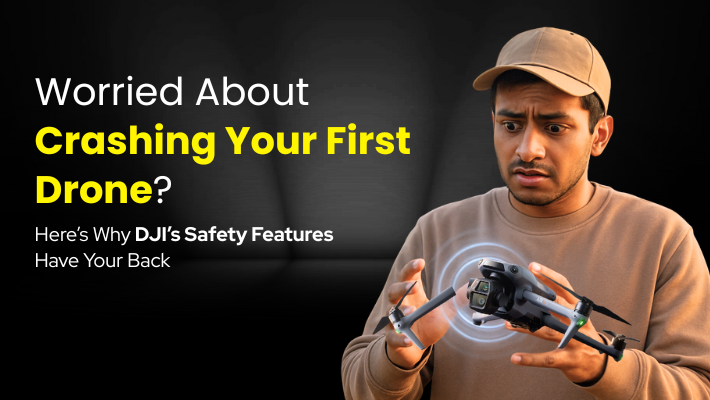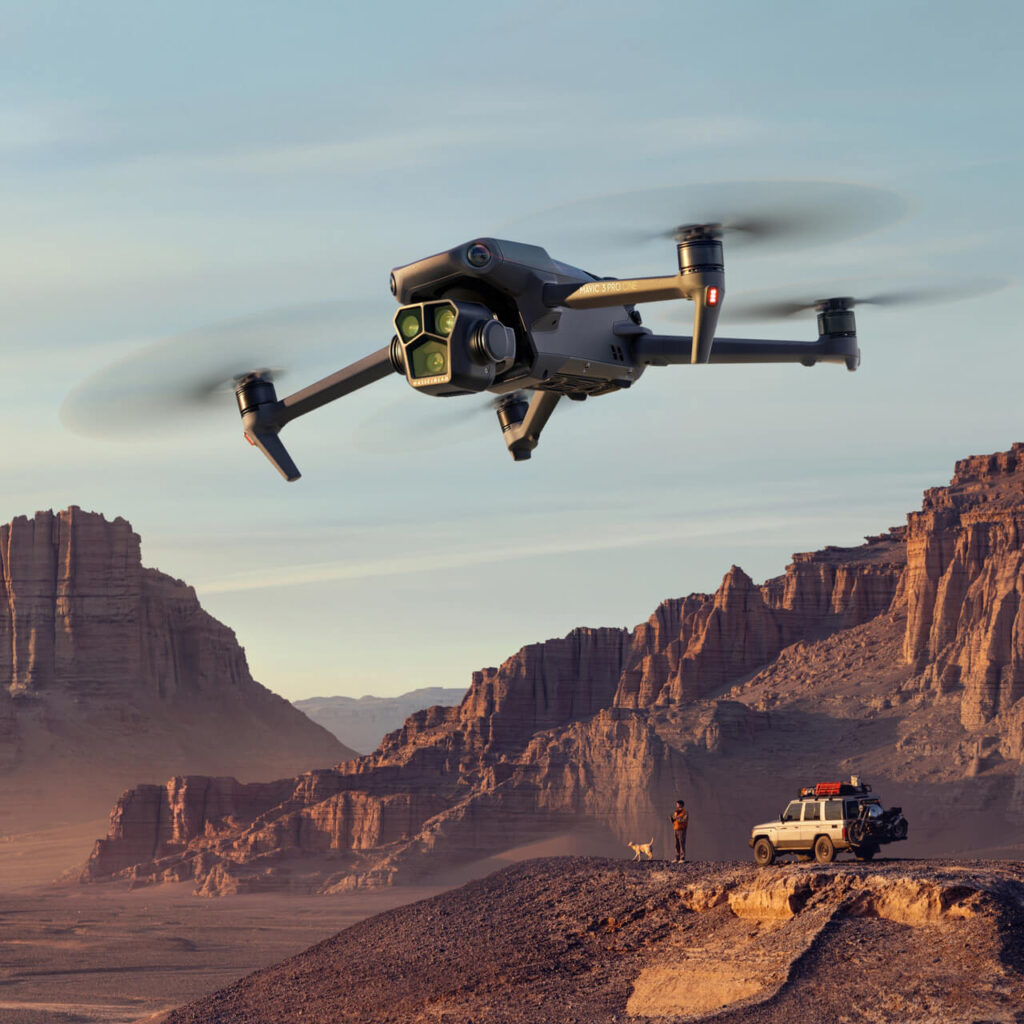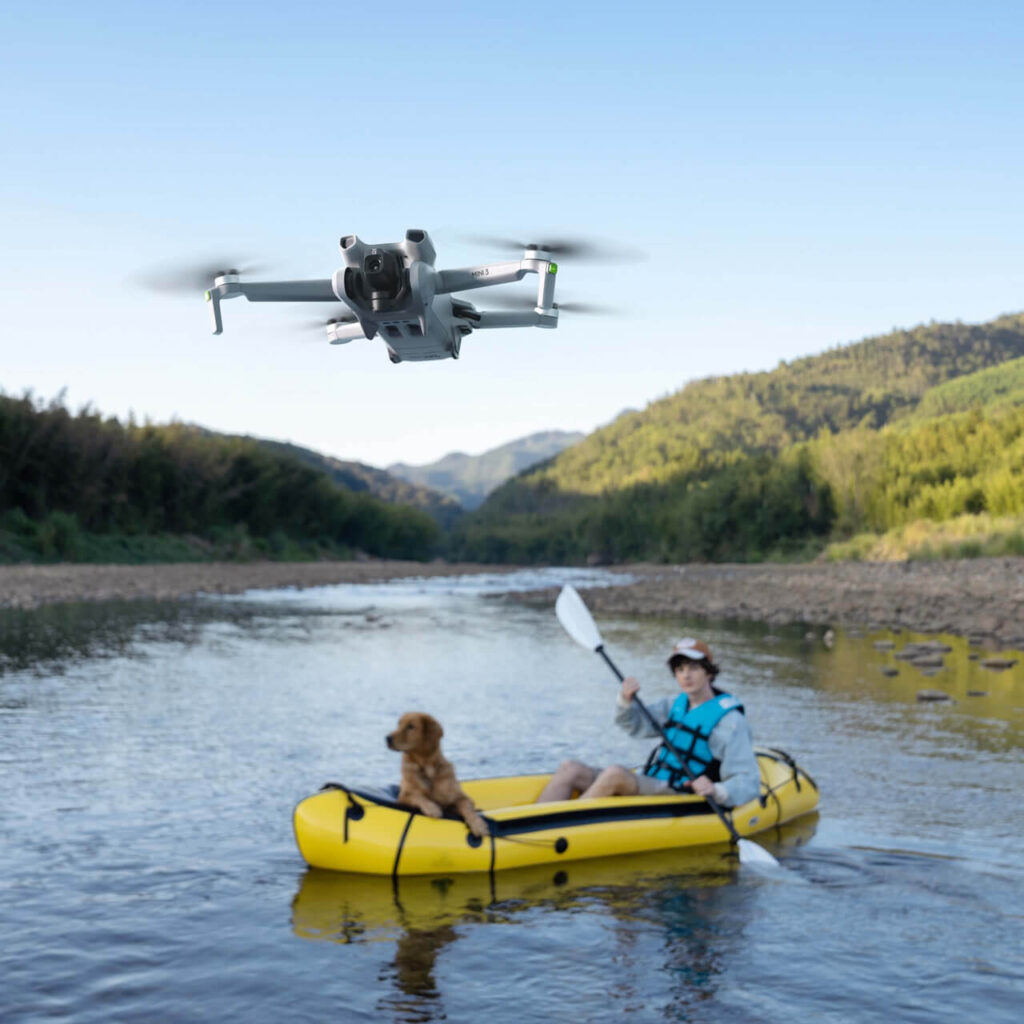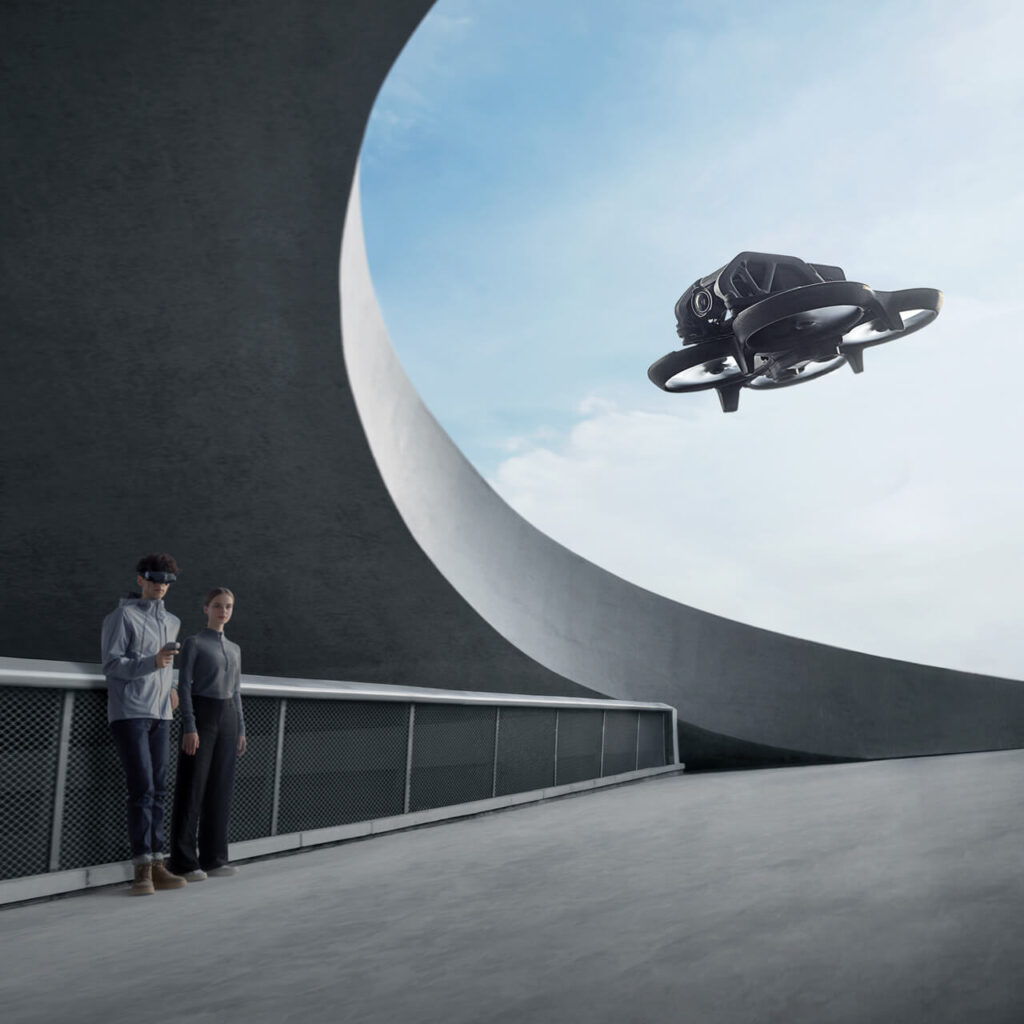Flying a drone for the first time is exciting. But let’s be honest—it can also be intimidating. The fear of crashing your expensive drone, hurting someone, or losing control mid-air is real. If you’re reading this with hesitation in your heart and your brand-new DJI Air 3 still sitting in its box, we want you to know: we get it.
This blog is written especially for you—the cautious beginner, the hesitant buyer, the parent gifting a drone to their kid, or the creator who has never flown before. Let us walk you through how DJI has baked safety into every layer of its technology so you can fly confidently and without fear.
1. Omnidirectional Obstacle Sensing: Your Built-in Safety Net
Because of its omnidirectional obstacle sensing capability, the DJI Air 3 can identify obstacles from all angles, including the front, rear, sides, top, and bottom.
| Direction | Sensor Type | Purpose |
|---|---|---|
| Front & Back | Wide-angle visual sensors | Detects trees, walls, or other objects ahead or behind |
| Sides | Lateral sensors | Detects objects during sideways flight |
| Top & Bottom | Upward/downward sensors | Helps when flying under tree canopies or close to the ground |
Why This Matters: It’s like having eyes all around your drone. Even if you make a mistake, your drone won’t. It will stop, hover, or re-route to avoid a crash.
2. Advanced Return to Home (RTH): Your Drone Always Comes Back
Imagine flying over a lake or hilly area, and suddenly your battery runs low or your signal drops. Panic, right? Not with DJI.
DJI Air 3 features Advanced RTH, which means
- It automatically calculates the safest, most efficient route back to you.
- It avoids obstacles even on the way back.
- You can trigger it manually anytime.
For you, that means peace of mind. Even if you lose track or something goes wrong, your drone is smart enough to come home safely.
3. Hover Stability and Wind Resistance: Rock Solid in the Sky
The Air 3 is built to be steady, even when the wind tries to throw it off course.
- GPS + Vision Positioning helps it hover precisely.
- Level 5 wind resistance makes it stable even in breezy mountain spots or beach locations.
Real-Life Example: Let’s say you’re filming your friend’s wedding at a cliffside resort. You won’t have to worry about wind throwing off your shots—the Air 3 stays locked in.
4. Beginner-Friendly Intelligent Flight Modes
DJI knows you’re not a pro (yet). That’s why Air 3 includes flight modes that simplify everything:
| Mode | What It Does | Best For |
| MasterShots | Automatically records cinematic sequences | Beginners who want pro-level videos |
| FocusTrack | Keeps the camera focused on a moving subject | Solo travelers, pets, cyclists |
| QuickShots | Performs creative flight paths (Rocket, Circle, Helix, etc.) | Reels, Insta shots, vlogs |
These tools let you focus on your story, not the joystick.
5. AirSense and Geofencing: Fly Smarter, Not Riskier
- AirSense: Detects nearby aircraft and warns you to move out of the way.
- Geofencing: Alerts you if you’re about to fly in restricted or sensitive zones (airports, military areas).
So You Don’t Have To: Memorize airspace rules or stress over legality. The drone protects you from accidental violations.
6. Low Battery Alerts and Auto-Land Feature
When your battery gets low, your DJI Air 3 doesn’t just drop from the sky. It warns you early, gives you time to return, and can auto-land safely if needed.
| Battery Level | What Happens |
| 20% | Low Battery Alert: Time to return |
| 10% | Initiates Return to Home (RTH) |
| 5% or less | Begins Safe Auto-Landing |
What This Means for You: Even if you forget to check the battery, DJI won’t. You’re covered.
7. DJI Fly App: Your Co-Pilot in the Sky
The DJI Fly app does more than just connect your drone to your phone. It actually guides you while you fly:
- Real-time warnings for wind, obstacles, or battery
- Beginner tutorials built into the app
- Flight records to review and learn from your flights
You’re never flying blind. The app is like a drone instructor in your pocket.
8. Tips to Boost Your Confidence as a Beginner
- Start in Beginner Mode: The drone flies slower and higher to keep things safe.
- Practice in Open Spaces: Avoid flying near trees or buildings at first.
- Always Do a Pre-Flight Check: Battery level, compass calibration, weather.
- Watch Tutorials: DJI has great resources on YouTube and in the app.
- Fly with a Friend: Having a spotter helps until you’re confident solo.
9. Real User Stories: “I Was Nervous Too”
Ananya, 24, Travel Vlogger: “I was terrified to fly my DJI Air 3 in Himachal. But obstacle sensing saved me from hitting a tree on my very first day! Now I can’t imagine traveling without it.”
Rahul, 38, Wedding Cinematographer: “I gifted my nephew his first drone, and I was nervous. But the safety features gave me peace of mind. He learned faster than I expected.”
These stories prove you’re not alone in your fear. And you’re not stuck with it.
10. Final Words: Your Fear Is Valid, But It Won’t Last Forever
Every great pilot once feared their first flight. What matters is that you take that step — and DJI Air 3 is designed to make that first step feel safe, smooth, and exciting.
You don’t have to be fearless. You just need a drone that has your back.
So open the box. Power it on. Step outside.
Your story deserves to be told — and at Jetayu Gadgets, we make sure it begins with the safest drone for your journey.




